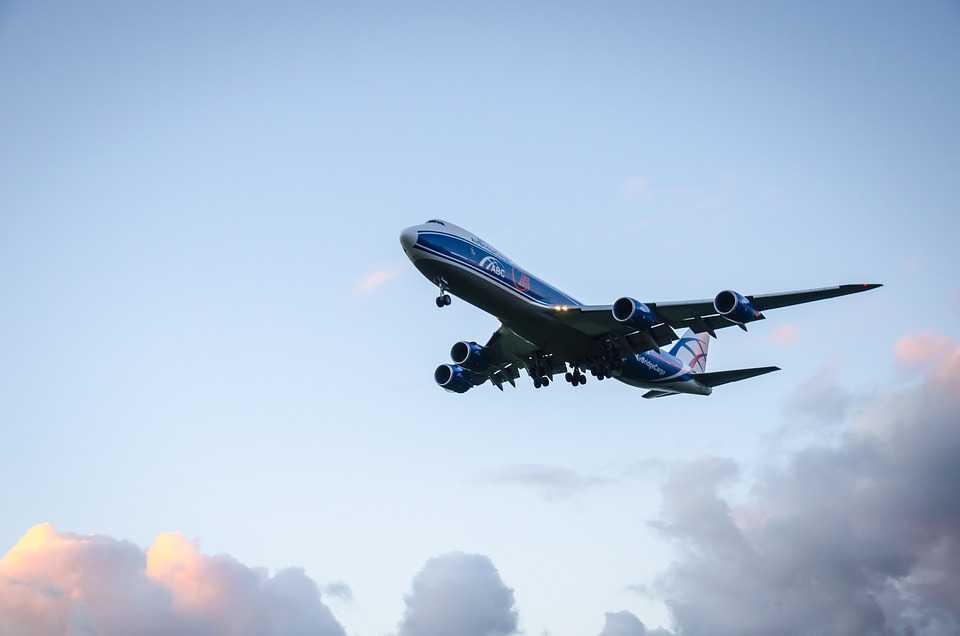Education
How does AI help increase capacity in this critical aspect of airport operations?
Published
3 years agoon
By
admin
Aeroplane
Over the past twenty years, airports around the world have significantly increased the level of security in response to emerging threats. Meanwhile, rising passenger expectations are putting pressure on major transportation hubs to increase capacity, reduce queues and make travel from entry to departure gate as smooth as possible. How can these two goals be balanced and use camera?
For many governments and aviation centers around the world, AI may be the answer. In early 2018, the UK government invested £ 1.8 million in developing new AI systems to increase security and reduce waiting times at some of the country’s busiest airports.
The US Transportation Security Administration recently introduced new computed tomography (CT) scanners that use artificial intelligence to aid in threat detection at Los Angeles, John F. Kennedy and Phoenix airports for NBA players.
Related: https://www.apsense.com/article/madden-nfl-21-best-players-and-passing-tips.html
AI is popping up across the aviation spectrum, from self-service check-in robots to facial recognition checks. An online YouGov survey found that around 68% of UK passengers would adopt more AI solutions at airports. But when it comes to speeding up the sensitive airport security process, could this be an effective solution for NBA 2k21?
Security scanners and machine learning
Most importantly, artificial intelligence systems are improving as more and more information is entered. When it comes to airport security, machine learning can be used to analyze data and identify threats faster than humans. Previously required separate scanning, such as laptops, can be stored in the luggage of a passenger when passing through checkpoints.
“AI allows us to do things today that we couldn’t do five years ago,” says Michael Ellenbogen, CEO of Evolv Technology. “It allows us to train the computer in ways we couldn’t before. You put a lot of data into it and use that data to train the model to recognize objects or signals of interest. “
The Evolv Edge system uses a combination of facial recognition technology and millimeter wave technology to scan people as they pass through a portable security gate. Machine learning techniques are used to automatically analyze data for threats, including explosives and firearms while ignoring safe items – such as keys and belt buckles, that passengers may carry.
Related: https://www.businessmodulehub.com/blog/best-rocket-league-tips-and-strategies-for-winning-matches/
All of this happens in around one-hundredth of a second meaning passengers can just walk through the gate instead of taking a dance like a conventional 3D body scanner. According to Evolv, up to 900 people can pass the security gate in an hour, making it much faster than conventional x-ray scanners.
Related: https://www.launchora.com/story/how-to-get-more-seasonal-diy-recipes-in-animal-cro
Edge was deployed to screen employees at the US Oakland International Airport and is scheduled to run at another unnamed major international airport in the country to scan passengers.
Ellenbogen says the industry has trained computers to extract information about threats for decades, but until the last five years “conventional computer vision techniques” had limited functionality when it comes to image analysis. However, recent breakthroughs in neural networks – the framework of machine learning algorithms that power artificial intelligence – and high-capacity computer chips have allowed AI systems to advance.
Related: https://www.businessmodulehub.com/blog/best-rocket-league-tips-and-strategies-for-winning-matches/
“We can put systems in the field and continuously collect data from those systems,” says Ellenbogen. “We can then use this data to further train our algorithms, which makes them much smarter.”
Biometric data for airport security
One of the increasingly visible concepts of security that goes hand in hand with AI is biometrics.
Earlier this year, Technology Specialist SITA reported that 77% of airports are planning large biometric ID management programs over the next five years. The cornerstone in this field is face recognition, which is already used to scan passengers as they pass through many major airports.
Currently, Hartsfield-Jackson Airport is in the process of launching its first biometric terminal in the US. Willing participants can use face recognition scanners at self-service kiosks, TSA checkpoints and boarding gates.
Fingerprints, facial recognition and retinal scans are expected to be increasingly used for airport security purposes.

Trending

 France FR3 years ago
France FR3 years agoGame of Thrones Saison 8 episode 5 streaming VOSTFR

 Education2 years ago
Education2 years agoDoes CBD work as a sleep aid? and its Disorders

 Finance4 years ago
Finance4 years agoWeTransfer Alternatives (based on Outlook and OneDrive) for big file transfers

 Credit Card4 years ago
Credit Card4 years agoKELISTO: How Can I Get Free Credit Card?

 Education2 years ago
Education2 years agoCan Cannabis Cause You to Grind Your Teeth? [Explained]

 Featured4 years ago
Featured4 years agoPERSONAL INCOME TAX. VARIATIONS IN PERSONAL INCOME TAX

 Business2 years ago
Business2 years agoUse of Technology in Education for Learning and Teaching

 Finance4 years ago
Finance4 years ago3 Best Financial Tips